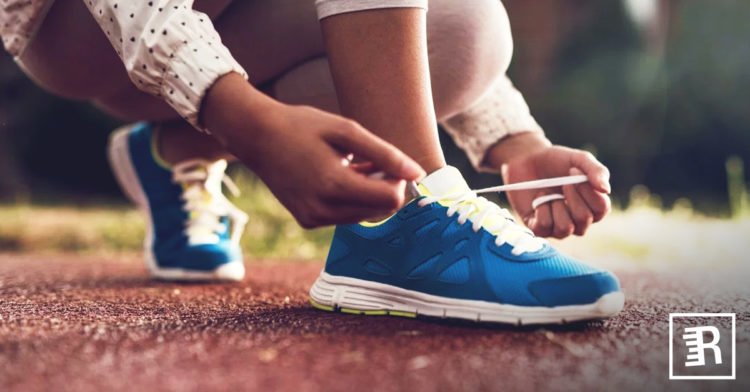If you have heard the terms pronation and supination before but never fully understood them, you’re not the first! It’s one of those areas that many ignore when they shouldn't as it holds significance to maintaining a healthy, injury-free body.
Understanding these two areas of your own running and biomechanics can make a world of difference to your performance too. This knowledge also enables you to choose the best shoe possible for your running style and foot type.
The foot anatomy is a complex one comprised of 28 bones, 100 ligaments alongside several muscles and tendons. This delicate yet intricate structure is what holds the entire weight of your body and propels it forward during running. It’s no wonder issues can arise when just one element of the gait cycle is out of balance. This leads up on to examining these two terms, supination and pronation, in more depth…
What’s pronation?
On the most basic level, pronation is the motion of your foot rolling from your heel to your toe. The moment your foot hits the ground is the moment this movement, also known as the gait cycle, kicks into action.
There are three different types of pronation someone can have. To discover which may be yours, this video gives a slow-motion recording of how each one looks in action.
The 3 Different Types of Pronation:
Neutral pronation:
By far the most common type, neutral pronation happens when the outside of the heel is first to strike the ground. Feet roll inwards slightly and touch the floor completely. This running type is the healthiest as your feet land in such a way the body weight is supported.
Having a neutral pronation also means you’re running shoe won’t need to be as cushioned as other runners. Even though neutral runners will be good at absorbing shock generally, a trainer with mild support can be helpful. You’ll also tend to put weight evenly on the front of your feet when pushing off.
Over pronation:
Ideally, a neutral runner’s heel will roll inwards by about 15%. When someone over pronates, their heel goes over this ‘safe’ percentage which is why these runners will experience more aches and discomfort. As the shock absorption is limited with this running style, the feet and ankle can’t stabilize efficiently.
When it comes to pushing off, the over pronator will push off with predominantly the big and second toes. As the weight distribution is less even, feet have to work harder and require more support to complete an effective stride.
Under pronation:
Similar to both types of pronation, the outer heel strikes the ground first and then rolls inward at less than 15%. As feet roll inwards less, all impact hits a small part of the outer foot and causes issues as shock is poorly absorbed.
It’s important to realize that difficulties with pronation don’t just affect athletes but affect the everyday person. So where's a good place to start? You may have had your gait measured before by a specialist running store which covers the same thing. Whether you over or under pronate is nothing to be overly concerned about. What is essential is that you find the right shoe to give your feet the needed support to balance the shock.
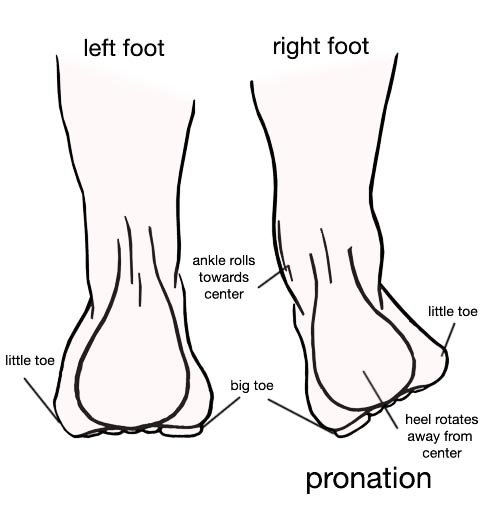
What about Supination?
Supination is just another term for under-pronation and relates to the rolling outwards of the feet during a run. Naturally, the movement of supination happens when you push-off from the ground and the heel lifts. Afterwards, your forefoot pushes you forward.
The big problem occurs when you do this excessively so the muscles become strained. Your body then has to work twice as hard to stabilize your ankle which may result in sprains and torn ligaments.
The main difference structurally between supinator’s and pronators is that a pronator will have a flatter arch. Supinators tend to have higher arches. The image below shows how this translates during the movement phase.
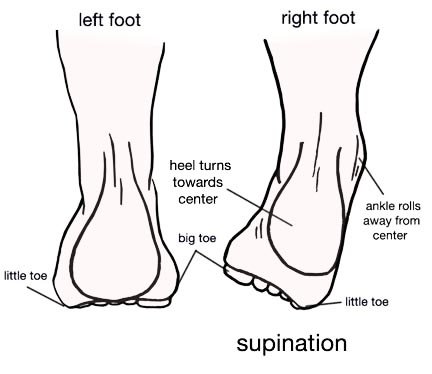
When you have either pronation or supination, you may experience various symptoms depending on how severe it is. If you have noticed any of the following signs, seek to discover your exact running style to find the correct shoes or insoles you require as soon as possible.
Signs you may have excessive pronation/supination:
- Arch or heel pain
- Common ankle sprains
- Flatter feet/ reduced arches
- Shin splints
- Hip/knee/back issues
Finding an insole to suit your specific supination style
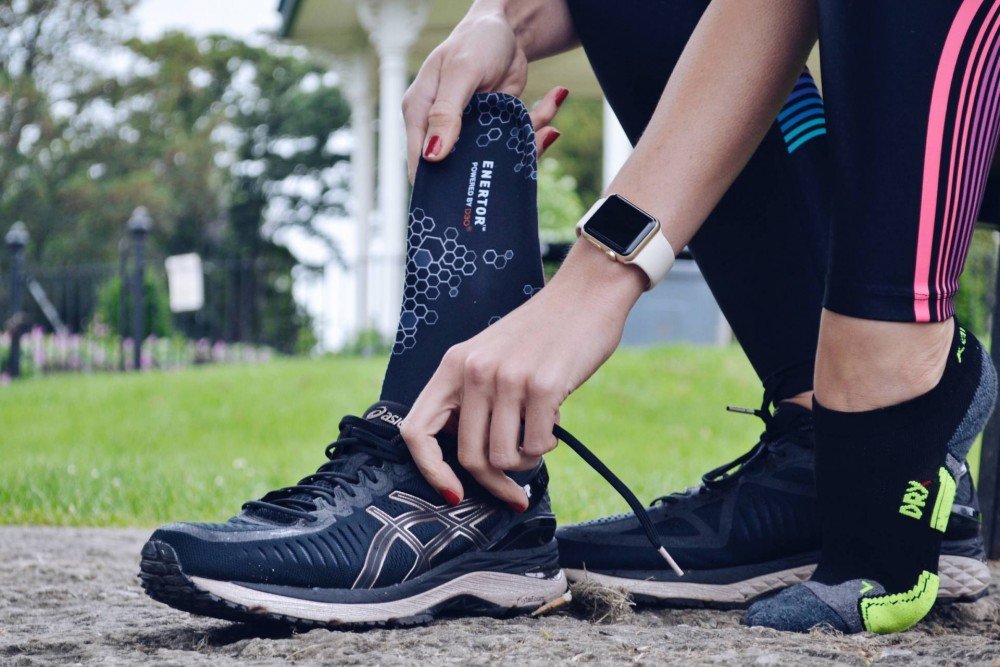
Insoles can make a huge difference to your run and realign your feet bringing them back into balance. They provide much needed support and help bring misaligned feet into enhanced stability.
Searching online you’ll discover a huge variety of insoles to suit varying types of supination. This website for example has a number of options starting with full-length insoles which prevents the unwanted rolling from supination. The Total Support insole is good for marathon runners with its deeper heel cup making an instant difference. You could also try various pronation and supination foot wedges for a more lightweight solution.
Figuring out your own gait style
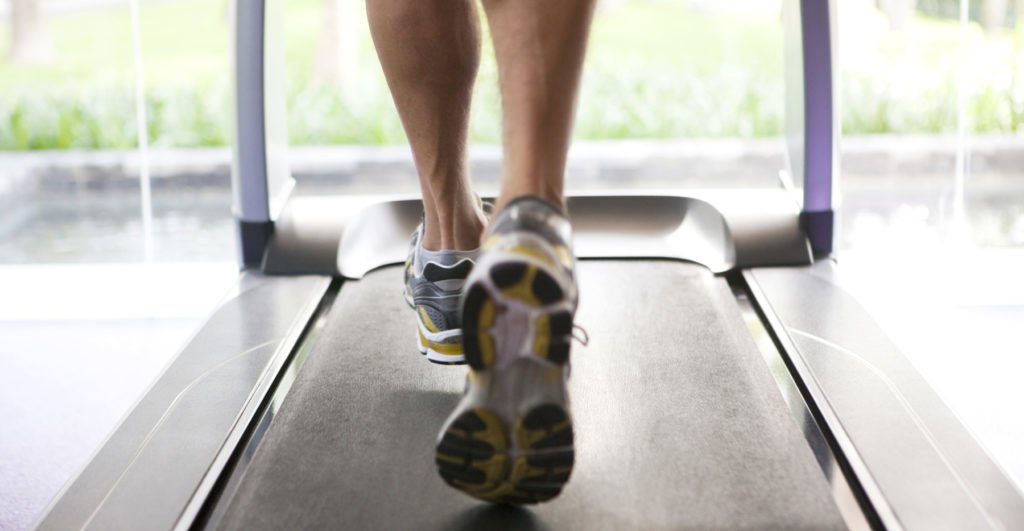
If you want to gain a deeper understanding of how pronation or supination looks and feels on yourself, try doing this…
- Stand with your feet at equal distance and face forwards
- Turn your body and glance over your left shoulder but keep feet stationary & parallel
- Your left leg will rotate outwards as you put your body weight on the outer part of your left foot
- At this stage, your left foot will have supinated
- Now to understand what pronation feels like, simply rotate your right leg inwards so the weight is on the inner right foot.
How to find the right shoes for your running style
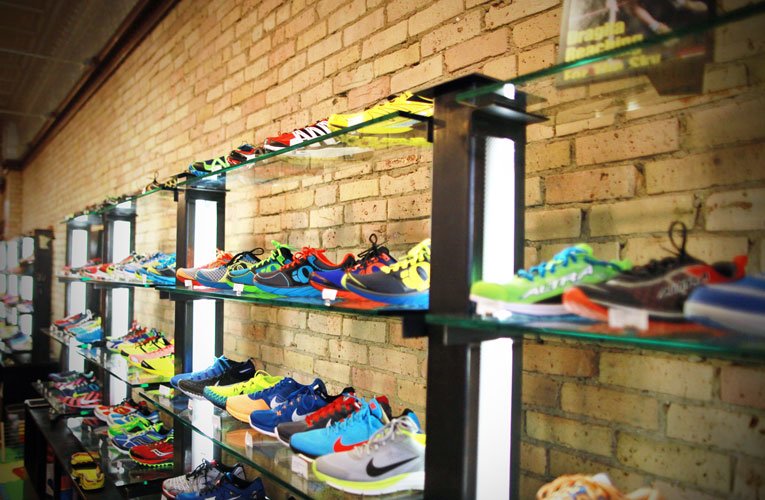
You’d be surprised to find out just how many runners have bio-mechanical problems. You'd be even more surprised to find out how much can be done to support your particular issue however.
When you want to find the right shoe for your gait style, it’s highly recommended you visit an experienced podiatrist who can analyze your foot-strike. Podiatrists along with specialist running stores can take a detailed gait analysis and provide sound recommendations.
Some will video you running on a treadmill and tell you there a then which gait you have. After your gaits been analyzed, they will be able to make appropriate suggestions as to which type of trainer you should be wearing. If you do have an excessive pronation/supination, you will most likely be recommended orthotic inserts.
Best shoes for those with overpronation
- Wear trainers that are built on a curved/ semi curved last. These also promote speedier strides whilst feeling cushioned under your feet.
- Find trainers which rank high for stability and motion control.
- You’ll want the midsole to have varying levels of density
- Look out for elements that control pronation too. These may be internal or external
- Trainers with room for additional inserts for arch support if required.
Top 5 recommendations
Best shoes for those with Underpronation
- Look for lightweight shoes with curved lasts
- Make sure the trainer has a flexible inner
Recommendations
- Nike recommends shoes in their neutral running category such as Air Max, Air Zoom Vomero and the Air Pegasus.
- Asics Men Gel Cumulus
- Nikes womens Free 5.0 v4
- New Mens Balance M980V1 Fresh Foam
- Saucony women’s Cohesion 8
Now you have deeper understanding into pronation, supination and how their severity varies from person to person, you can locate the perfect trainers for your needs. Running should be fun and never be at the detriment of your health. Use this information to find shoes that support the individual quirks of your gait and keep your stride strong and healthy.

